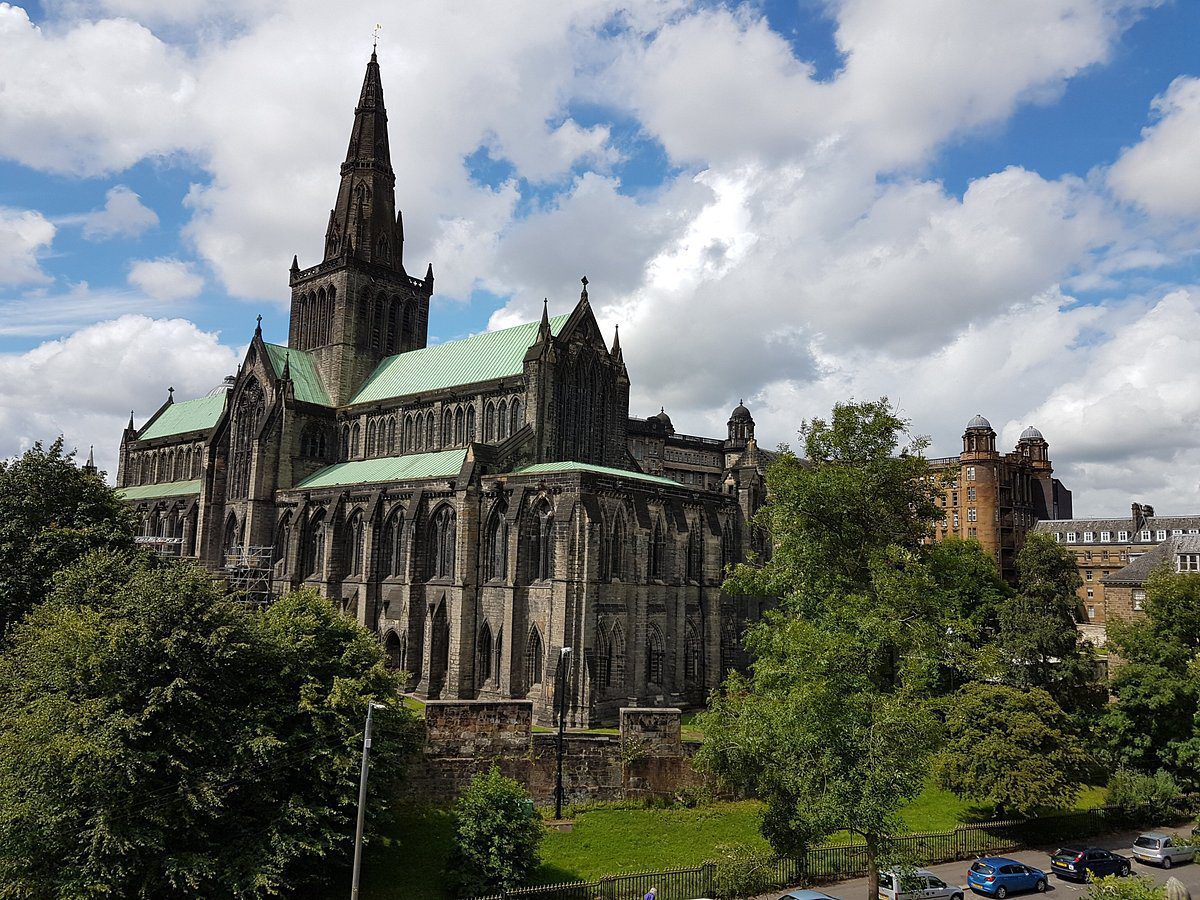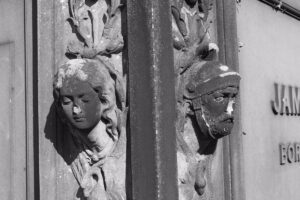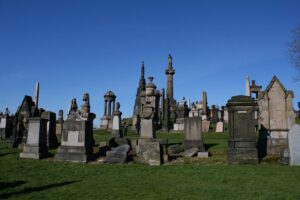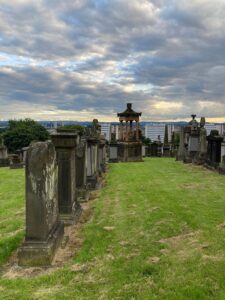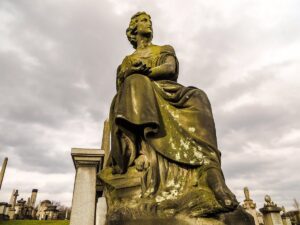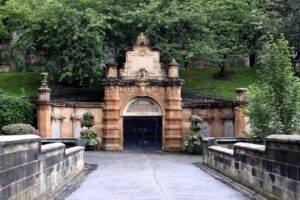Description
Glasgow Necropolis
The Glasgow Necropolis is a historic Victorian cemetery situated on a prominent hill to the east of Glasgow Cathedral. Established in 1833 by the Merchants' House of Glasgow, it was modeled after Paris's Père Lachaise Cemetery and was one of Scotland's earliest garden cemeteries. Spanning 37 acres, it houses approximately 50,000 burials, with around 3,500 monuments marking the graves of notable individuals from Glasgow's industrial and cultural history. The cemetery's design reflects the Victorian era's emphasis on status and class, with wealthier individuals interred at higher elevations, symbolizing their proximity to heaven. (VisitScotland, Victorian Web)
Architecturally, the Necropolis boasts a diverse array of monuments, mausolea, and sculptures. Prominent structures include the John Knox monument, a Doric column erected in 1825, and the mausoleum of Major Archibald Douglas Monteath, designed in a neo-Norman style. Other notable tombs feature works by renowned architects and sculptors such as Charles Rennie Mackintosh and Alexander 'Greek' Thomson. These monuments showcase a range of styles, from classical to art nouveau, reflecting the artistic trends of the time. (Wikipedia, Glasgow Necropolis)
Today, the Glasgow Necropolis serves as both a historical site and a tranquil green space. Visitors can explore its winding paths, admire the diverse architecture, and enjoy panoramic views of the city. The Friends of Glasgow Necropolis offer guided walking tours, providing insights into the lives of those interred and the cemetery's rich history. These tours are popular and donations support the conservation and restoration efforts of this significant landmark. (Glasgow Necropolis)
Location
-
Castle St, Glasgow, UK
